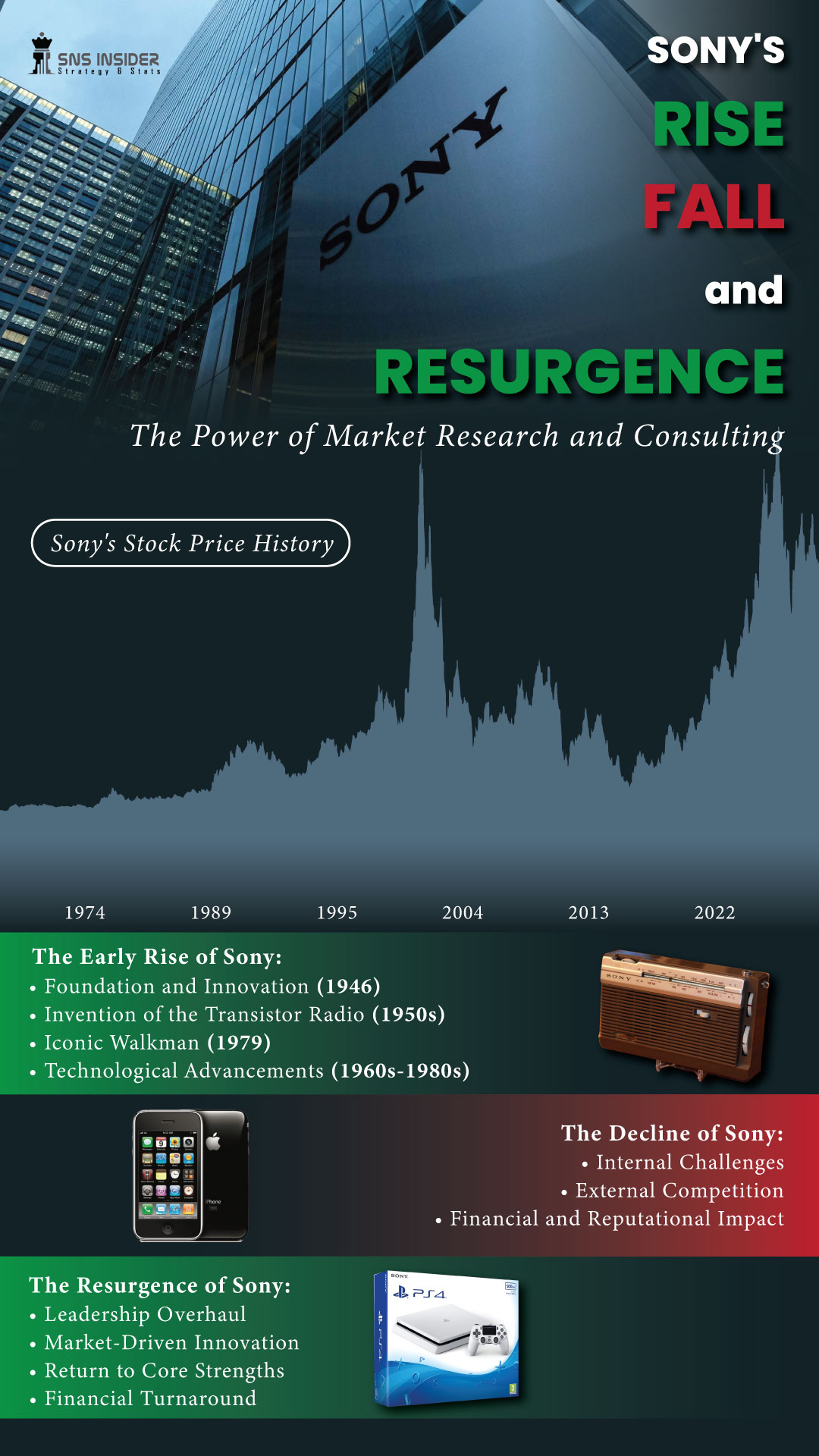
Introduction
Innovation... Quality - Those are the words I remember with the Sony Corporation, and whilst of course, they both still play a vital role in its products; this Japanese monolith has endured an incredible story with more triumph than we can handle and much that gave us legitimate worry. In this background read, we delve further into Sony's meteoric rise and stunning downfall, with a large pot of gold waiting at the end of the consulting rainbow.
The Early Rise of Sony
Founded in postwar Japan in 1946 by Masaru Ibuka and Akio Morita; Sony was founded in the spirit of innovation and quality. Its success has been punctuated through the decades with the invention of the transistor radio in the 1950s - changing how and where people listened to music - and its iconic Walkman in 1979, which did so again. It not only went on to create a new standard in the electronics industry but also established Sony as an undisputed global leader in consumer electronics.
In the next decades, Sony further diversified its product line and moved into new arenas, gaining solid technological reputation during 1960s and 1980s. Their Trinitron television instantly became the gold standard on release of 1968, and Sony branched out even more with forays into the music and entertainment industries. The company became a world leader thanks to its innovative solutions and understanding the market.
The Decline of Sony
Sony hit serious troubles in the late 1990s and early 2000s, despite having a couple of successes along the way. Things weren't entirely rosy inside - the company itself had a complicated and sometimes cumbersome organizational structure that got in the way of quick decision-making. These issues were compounded by strategic missteps such as missing the digital music shift and being slow to recognize the growth in smartphones.
On the outside, Sony was battling with Apple and Samsung, new entrants to the market who moved quicker on the emergence of new technologies, stealing Sony's market share away. Forged in the crucible of Sony's desperate effort to catch up as technology raced forward and consumers swiftly shifted preferences. The result - the company lost market share and financial performance plummeted, ruining the company's previously stellar reputation, which created public relations problems.
The Resurgence of Sony
To restore itself from the volatility Sony had built towards reinventing itself with full determination. The strategic reversal started with sweeping changes in the company leadership. That David sold the painting marked a rare victory for Kazuo Hirai, and it came as part of his four-year overhaul to pull Sony back to its core businesses of gaming, entertainment, and imaging technology. Compared to the pre-Kutaragi days, this change enabled Sony to strategically focus and optimize operations around differentiating competences.
Sony's resurgence is in no small part thanks to research that hit the market. Sony invested heavily into thorough market analysis which helped them to understand what the consumer wants and needs, and where the trends are going. Essentially, it means research that shaped the development of products and even informed Sony to innovate in ways consumers care. The PlayStation 4 was hailed as a huge turnaround following its announcement since it directly addressed needs of the gaming market and consumers, and led the brand to record sales.
Consulting played a major. Roll in the return from Sony as well. They turned to the best consulting firms in order to get new insights about how to address their strategic challenges. They advised Sony on streamlining its operations, identifying the best practices across its different business units. In restructuring, long-term strategy and consulting support (to ensure that the above were reflected in a market)
The results were potent: a new emphasis from Sony on innovation and market-driven product development, which subsequently saw the Japanese electronics giant release pioneering new camera technology and branch into content creation and entertainment. Its aptitude to capitalize on its market-research and consulting-pro division has helped it resurge as a top consumer-electronics and entertainment leader.
Lessons Learned
Amongst other lessons, Sony's tale illuminates the vital role that market research and consulting play in adapting to business dilemmas and ensuring triumph. Continuous market research is critical to ensure that you are keeping abreast of consumer trends and technological changes. It gives the "amazing aha moment" in your routines... It offers you reality about why your life is the way it is.
Being an expert of a field can help in seeing things from a different plan and can give strategic clarity to help companies know what exactly they are looking for or what strategies to execute for turnaround the situation. In Sony's case, external consulting enabled the company to break free of stagnation and remain competitive in its field.
Conclusion
The recent rise, fall, and resurgence of Sony illustrates the dynamic nature of the business landscape and underscores the importance for companies to adapt and innovate continuously. Sony succeeded in climbing over this hurdle by accepting market research and consulting delivering fresh approaches for their products - a lesson many companies should learn if they are ever faced with challenges of the Samsung variety. Moving forward, it is evident that Sony plans to take every opportunity to understand market trends and utilize strategic advice.
Contact Us:
Akash Anand
SNS Insider | Strategy and Stats
+1 415-230-0044
Email: info@snsinsnder.com
Hi! Click one of our member below to chat on Phone